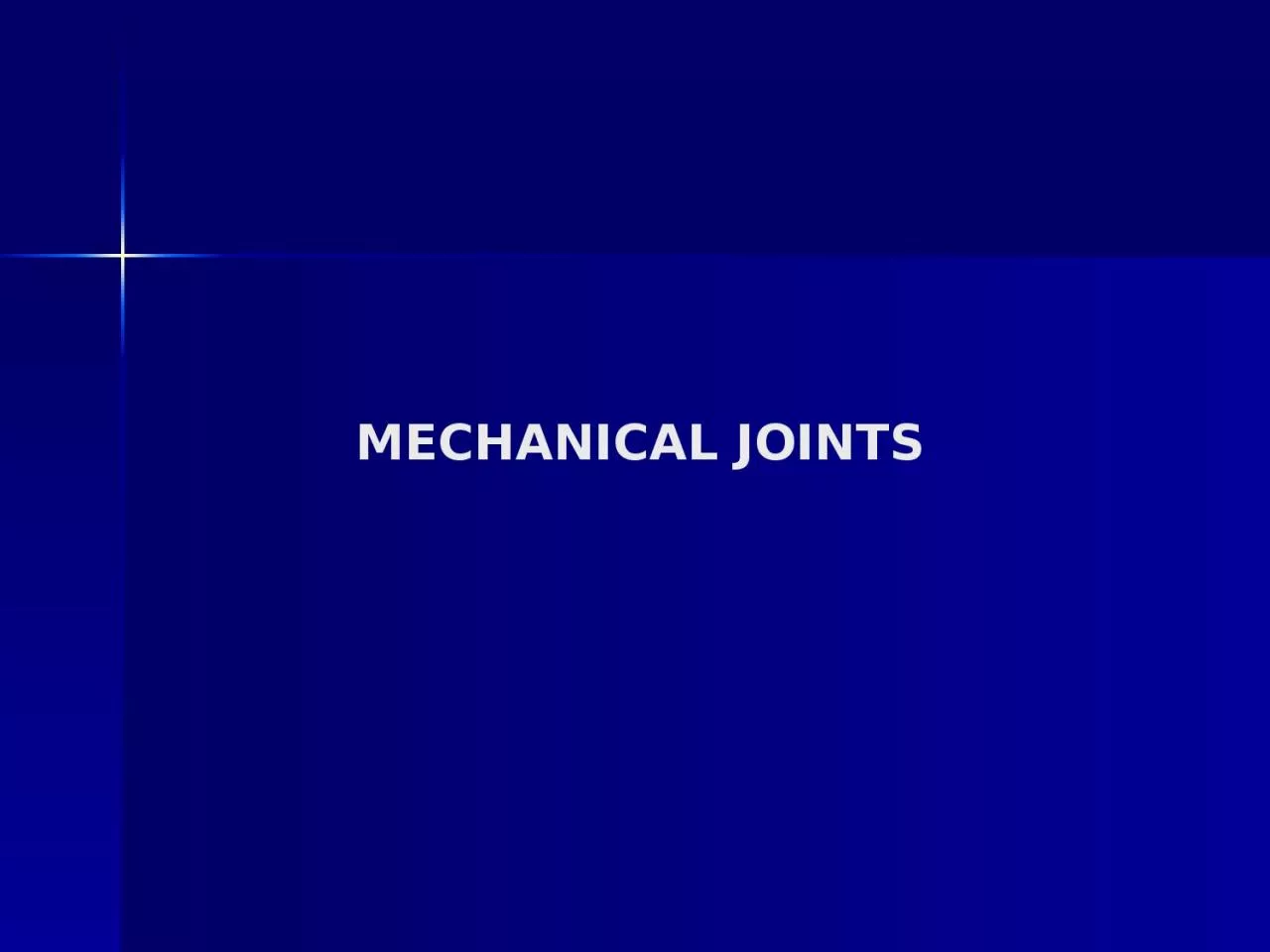

carbon reinforced composites are more sensitive to high bearing loads than metals design with as much bearing surface as is practical LOADING OF LAP SHEAR SPECIMEN IN TENSION eccentricity begins to develop and fastener tipping or cocking occurs ID: 1025572
Download Presentation The PPT/PDF document "MECHANICAL JOINTS A MAJOR CONCERN WHEN M..." is the property of its rightful owner. Permission is granted to download and print the materials on this web site for personal, non-commercial use only, and to display it on your personal computer provided you do not modify the materials and that you retain all copyright notices contained in the materials. By downloading content from our website, you accept the terms of this agreement.
1. MECHANICAL JOINTS
2. A MAJOR CONCERN WHEN MECHANICALLY JOINING COMPOSITES(carbon reinforced) composites are more sensitive to high bearing loads than metals (design with as much bearing surface as is practical)
3. LOADING OF LAP SHEAR SPECIMEN IN TENSIONeccentricity begins to develop and fastener tipping or "cocking" occurs (see fig. 1, pg. 707, ASM Vol. 1)little change is noted by changing angle of head -> big difference is in area of bearing that supports the reaction load (130 degree flush head was developed) (see figs. 2 and 3)Comp-Fast fasteners – prior to load, following loadas distance between centroids becomes greater reaction loads go up in value -> 130 degree head will not be satisfactory, limited to thin structures (see fig. 4)the tension head optimizes head bearing area and is recommended for both tension and shear applications where countersink depth does not exceed 70% of top laminate (see fig. 5)protruding head configurations not as sensitive to performance
4. FIT BETWEEN FASTENER AND HOLE/WORKPIECEclearance fitnet fitinterference fit
5. CLEARANCE FIT HOLESwhen clearance fit holes are used high clamp-up load appears to be beneficial for joint strength and fatigue lifeclamping forces must be spread out over sufficient area -> compressive strength of resin system cannot be exceeded or the composite will be crushedhigh clamp-up load delays slippage of composite laminates and cocking of fastener in joint (which contribute to high concentration of bearing stresses, see fig. 6, pg. 707, ASM Vol. 1)
6. NET FIT WOULD BE IDEAL, ALTHOUGH NOT PRACTICAL (TOLERANCE STACKUP)interference fit (common in metals) causes high shearing forces on reinforcing fibers and bends them down -> breaking the matrix resin, a 0.0007 inch interference reported to result in damage (see fig. 7a and b, pg. 708, ASM Vol. 1)composite fibers can accommodate much more compression -> a controlled expansion of a sleeve that remains statically in contact with the fibers is successful and can produce interferences up to 0.006 inches (see fig. 7c and d, pg. 708, ASM Vol. 1)although all that is desired is a "net" fit, the interference is used to absorb the tolerances on the hole and fastener
7. ADVANTAGES OF NET/INTERFERENCE FITless joint deflectionequal fastener load sharingreduction of relative fastener flexibility that causes localized high bearing stressesreduction or delay in hole growth/degradationlightning strike protectionif lightning strike (up to 100,000 A for 0.050 s. max dwell time) attaches to a fastener, the current must be dissipated through the fibers perpendicular to the fastener hole (carbon fibers 1,000 times more resistive than Al and epoxy resin 1,000,000 times)current must be dissipated in short period of time to minimize damage
8. POTENTIAL FOR GALVANIC CORROSION NEEDS TO BE CONSIDEREDcannot use gr/ep with (less noble metals) Al and alloy steel (non-corrosion resistant) – see https://www.corrosionpedia.com/galvanic-corrosion-of-metals-connected-to-carbon-fiber-reinforced-polymers/2/1556 with gr/ep use Ti, CRES, InconelTi cannot be used in contact with Al
9. FASTENER DESIGN GUIDE (major aerospace manufacturer)Fastener Selection ParametersFastener Selection Flow Diagramdrawing callouts often reference some military specification